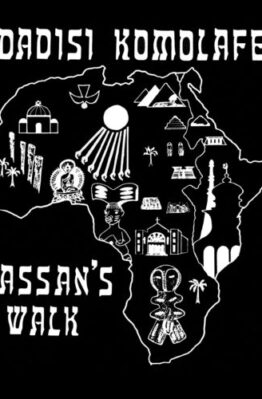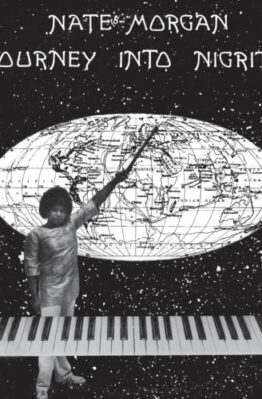Description
Cat#:
FORMAT: 145g LP / Limited 250 copies
LABEL: NIMBUS WEST RECORDS (U.S.A.)
CAT#: NS680 (REISSUE)
ARTIST: ADELE SEBASTIAN
TITLE: DESERT FAIRY PRINCESS
Originally released as: NIMBUS WEST RECORDS NS680 (1983, U.S.A.)
JAN: 4560312319482
Lineup:
Roberto Miranda (bass)
Billy Higgins (drums)
Adele Sebastian (flute, vocals)
Rickey Kelley (marimba)
Daoude Woods (percussion)
Bobby West (piano)
Tracks:
A1. Desert Fairy Princess
A2. Belize
A3. I Felt Spring
B1. Man From Tanganyika
B2. Day Dreamer
B3. Prayer For The People
Notes:
Music was the inevitable life path for Adele Sebastian. Born into a family of musicians, her mother Jacquelyn played piano in the Albert McNeil Jubilee Singers; her father, Malvin, was saxophonist and both her brothers, Joseph and Malvin Jr., sang. For Adele, it was the flute that gave expression to her musical voice.
Adele Stephanie Sebastian was born on 14 August 1956 in Riverside, California. With her strong family background in music, it was no surprise that she sought further education in the performing arts, and enrolled at California State University in Los Angeles majoring in Theatre Arts, with a minor in Pan Afrikan Studies.
It was during this period that she secured her musical affiliations with a broad range of West Coast jazz musicians including Frank Morgan and, most crucially, Horace Tapscott. Indeed, her university course of Pan Afrikan Studies found a cosmic echo in her membership of Tapscott’s Pan Afrikan People’s Arkestra, a community arts ensemble that was dedicated to providing accessible, community-focused jazz and musical education, as well as other groups such as The Creative Arts Ensemble and Acknowledgement.
As well as being a highly skilled flautist, Sebastian was a confident composer and co-wrote, staged and choreographed a musical about black history called ‘It’s a Brand New Day’. Her work with Horace Tapscott’s various alumni resulted in numerous recording credits including The Pan Afrikan Peoples Arkestra albums ‘The Call’, ‘Live at I.U.C.C.’ and ‘Flight 17’, as well as Jesse Sharps Quintet ‘Sharps and Flats’ and Linda Hills’ ‘Lullaby for Linda’, all released on the Nimbus West record label.
Established in 1978 by Tom Albach, Nimbus West was initially a vehicle to promote the music of Tapscott, who gave up a successful career in Lionel Hampton’s band and returned to Los Angeles to establish the Pan Afrikan Peoples Arkestra. Over some forty years, the Arkestra, along with the associated Union of God’s Musicians and Artists Ascension (UGMAA) Foundation, were at the vanguard of a crucial community-centred black arts movement in the city. Alongside the numerous projects from Tapscott, Nimbus West also issued recordings from a range of artists and ensembles from big band to solo and everything in between. These artists included Curtis Clark, Jesse Sharp, Gary Bias, Linda Hill, Roberto Miranda, Dadisi Komolafe, Rickey Kelly and Nate Morgan. Nimbus also released Adele Sebastian’s one and only album as leader in 1983, ‘Desert Fairy Princess’.
Recorded in 1981 and long considered a cornerstone in spiritual / soulful jazz, ‘Desert Fairy Princess’ features Billy Higgins on drums and gembreh; Roberto Miranda on bass; Bobby West on piano; Rickey Kelley on marimba and Daa’oud Woods on percussion . The album represents a vibrant trip exploring the deep musical roots of African Americans and every track is colourful and energetic, full of passion and verve. There are several original compositions as well as a deftly handled and pulsating version of McCoy Tyner’s ‘Man From Tanganyika’. ‘Desert Fairy Princess’ should be in everyone’s album collection for its joyful spirit. A large ensemble live version of ‘Desert Fairy Princess’ also appears on the album by Horace Tapscott with the Pan-Afrikan Peoples Arkestra, ‘Live at I.U.C.C.’
Sadly, Sebastian’s musical promise was cut short and died of kidney failure in 1983, aged 27.
Guitarist Nels Cline was in a group with Sebastian that briefly existed called ONE (the Organisation for Natural Expression) and described her as “the incredibly amazing and beautiful in every way flute player in Horace’s Arkestra at the time.. Adele was so charismatic, and she was so gentle, and she was so beautiful, everybody was completely blown away by Adele… she became instrumental in helping to try to put together an artists’ collective, and she was kind of our connection to the black community” (From ‘The Dark Tree: Jazz and Community Arts in Los Angeles’ by Steve Isoardi) – Tony Higgins, January 2016
![Import LP - NS680 RE - Desert Fairy Princess - Adele Sebastian [Sold Out]](https://alborejazz.com/wordpress/wp-content/uploads/2017/09/ns680re-e1589262951898.jpg)

